Earth is a celestial object and one of the components of the solar system. It is the third planet from the Sun, and the only celestial object capable of supporting life. Earth is the 6th largest solar system object, with a mean radius of 6,371 kilometers, and the 5th-largest planet after Jupiter, Saturn, Uranus, and Neptune. About 70% of the Earth’s total surface consists of water from various sources, with the ocean as the largest source, while the remaining area is land, occupied by about 7.6 billion people. The Earth’s atmosphere comprises several gases, including oxygen, nitrogen, and carbon gases. However, the Earth is not just a round object that supports life.
Origin of The Name
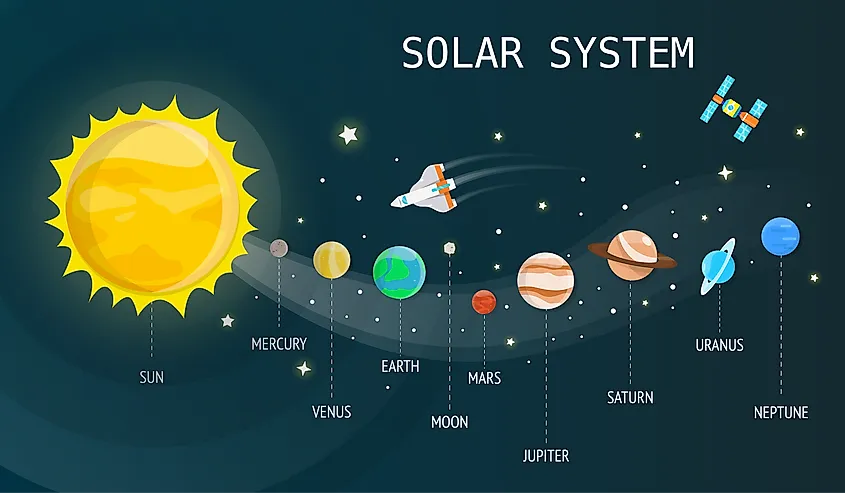
All the planets, except Earth, were named after Roman and Greek gods and goddesses. Earth is a modern English name derived from an Old English word “oerde” or “erda,” meaning soil or ground. The word’s early usage came from translations of the Greek word “gē,” Latin word “terra,” as well as Hebrew word “’éretz,” which meant dry land, soil, the ground, world’s surface, or human world. Although Earth was first used to refer to the planet in the 15th century, the Hebrew, Greek, and Latin words may have been used to refer to the sphere much earlier. For instance, “’éretz” appeared over 1,400 years ago, in Genesis chapter one. The name “terra” is occasionally used in science fiction to distinguish the Earth from other planets.
History of The Earth
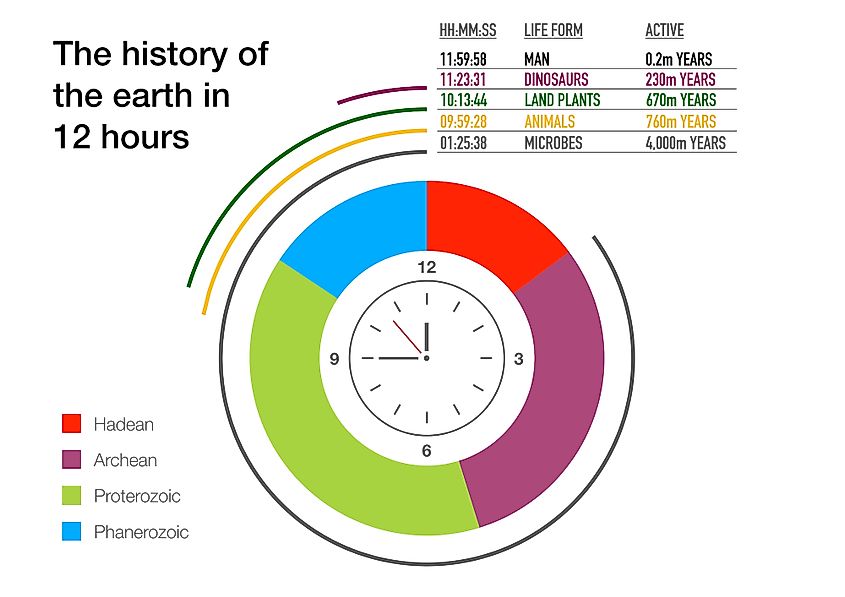
Earth’s origin has been a delicate subject of debate between scientists and religious groups. According to most religious beliefs, the Earth was created by a supernatural being or deity (God). However, the planet’s exploration by scientists and modern technology have modified people’s perception of the Earth. Until the 16th century, humans did not consider Planet Earth as one of the planets in the Solar System. There was also a widely considered belief that the planet was flat and afloat on a water body (ocean).
The Geological Time Scale (GTS) highlights the Earth’s events from the beginning to the present. These events fall into four main periods called eons. Hadean, the first eon, starts with the Earth’s formation and lasts about 600 million years. During the period, the temperatures were extremely high, and volcanic activities were also quite frequent, making it impossible for any form of life to exist. Hadean lasted from 4,540 million years ago (Mya) to 4,000 Mya and transition to the Archean Period.
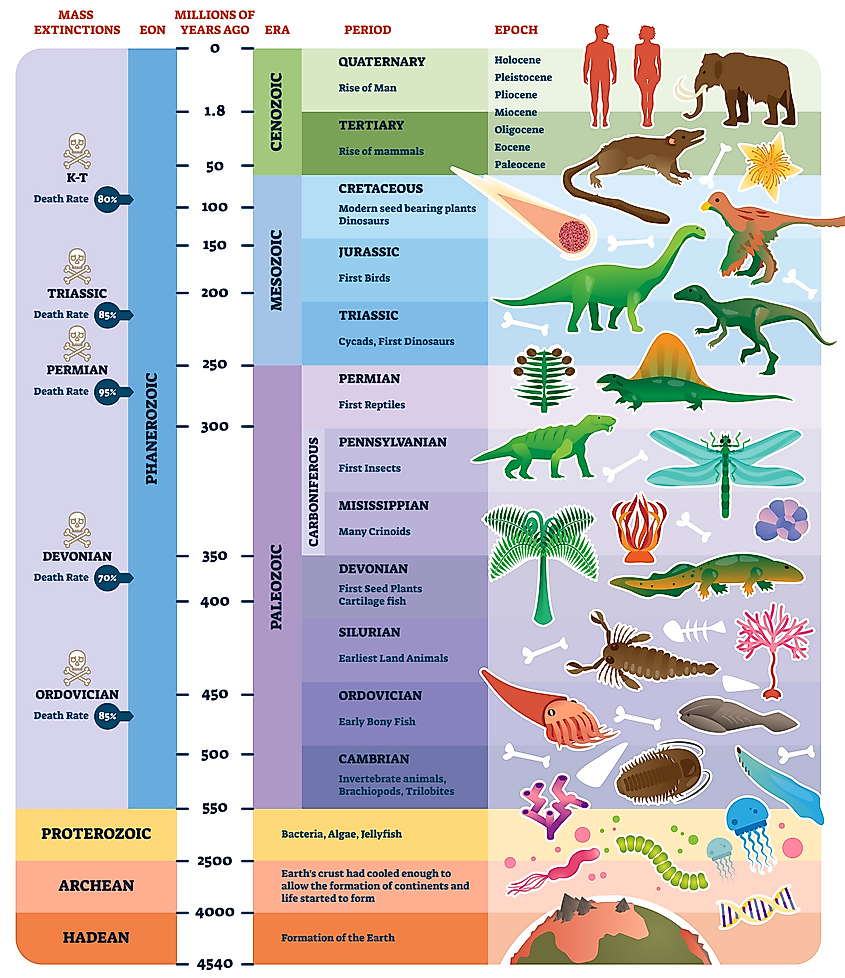
Archean eon lasted from 4,000 to 2,500 Mya and was friendlier than the previous period. During this period, the temperatures were much cooler, while volcanic activities were not as frequent as before. Prokaryotes, the earliest known lifeforms, emerged at the beginning of the eon through the abiogenesis process (life arising from non-living material). Three continents; Vaalbara, Ur, and Kenorland, are thought to have existed during this eon.
The third eon, Proterozoic, begun about 2,500 Mya and lasted about 2 billion years. During this eon, more complex lifeforms emerged, collectively known as Eukaryotes. These organisms produced large quantities of oxygen through the photosynthetic process, which became vital for plant and animal survival on the planet. The planet may have also experienced extremely low temperatures, going below the melting point in most places. The continents of Pannotia, Rodinia, and Columbia may have also existed during the Proterozoic eon. The first three eons form a supereon known as Precambrian.
The final eon is the Phanerozoic, which has existed since 541 Mya. This period is characterized by complex life forms and marked by the dominance of the vertebrate species. Pangaea, an ancient supercontinent, formed during this eon and later disintegrated into the current landmasses. Several extinction and evolution events have also taken place during the Phanerozoic eon.
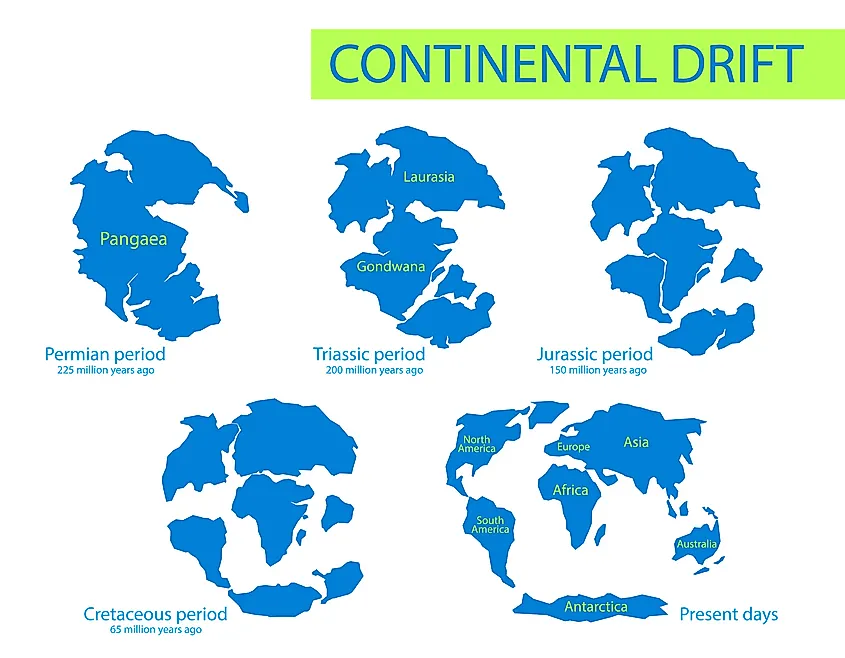
Earth Formation
Planet Earth formed about 4,540 million years ago and has been in existence for roughly one-third of the universe’s age. The planet’s formation is based on two theories; core accretion and disc instability model. However, the core accretion model is the most popular and widely accepted theory, especially for smaller planets like Earth, while the disk instability model accounts for the formation of larger planets and other objects.
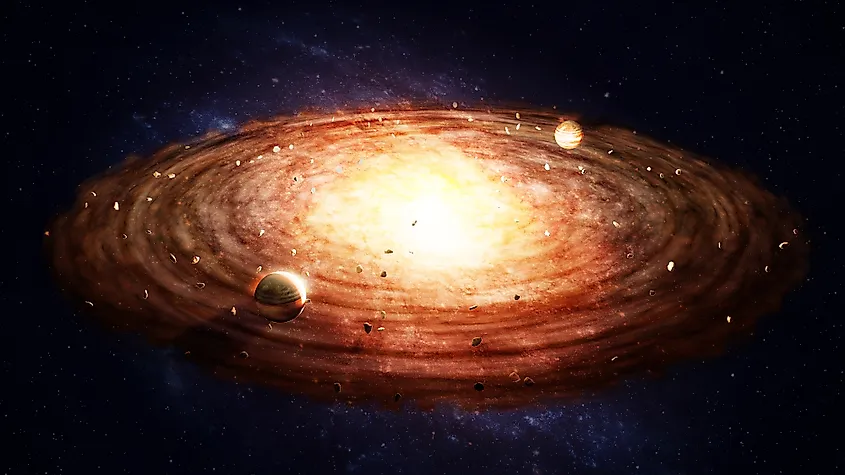
According to the accretion model, the Solar System comprised gas and dust clouds known as solar nebular. Gravity caused these materials to spin, leading to the formation of the Sun. Once the Sun formed, the other dust and gases bundled together to form larger objects. Solar winds drove away lighter particles and gases such as helium and hydrogen, leaving the larger, heavier rocky to form Planet Earth and other celestial objects. The rocky core was the first to form. Lighter material formed the crust while the denser ones sunk into the center. The magnetic field, formed around 3,500 Mya, prevented the planet from being swirled away. Gravity also attracted some of the gases that composed the atmosphere.
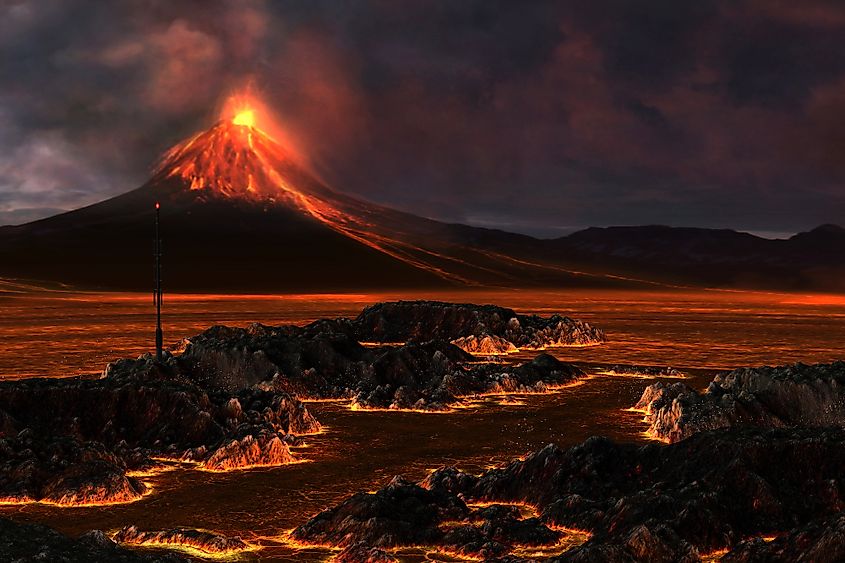
The flowing mantle underneath the crust caused plate tectonics, giving rise to volcanoes and mountains that emitted gases into the atmosphere. Over the years, plate tectonics forced the continental crusts to coalesce and form a supercontinent, which later disintegrated to form the current continents. Rodina started breaking apart around 750 Mya, while Pannotia formed between 600 and 540 Mya. Pangaea began breaking apart around 180 Mya. Processes such as volcanic eruptions, tectonic plates, weathering, flooding, glaciation, and erosion constantly reshape the Earth.
Hydrosphere and Atmosphere

Unlike other planets, Earth has abundant surface water, making up 70.8% of the total surface area. The hydrosphere comprises oceans, gulfs, lakes, seas, rivers, and underground water. The oceans cover about 71% of the Earth’s surface, with a total volume of about 1.3 billion cubic kilometers. Only 2.5% of the planet’s water resources are fresh water; the rest is saline water. At sea level, the Earth’s average atmospheric pressure is 101.325 kPa, with the atmosphere mainly comprising of abundant nitrogen (78%) and oxygen 20.9%. Other trace gases and water vapor are also present in the atmosphere. The atmosphere is subdivided into thermosphere, mesosphere, stratosphere, and troposphere (lowest layers) layers. The troposphere accounts for about 75% of the total atmosphere mass and contains almost all the water vapor.
Physical Characteristics
Planet Earth is spherical and only nearly flat at the poles, with an equatorial bulge due to centrifugal forces resulting from the Earth’s rotation. Thus, the Earth’s shape can best be described as an oblate spheroid, with an average diameter of 12,742 kilometers. The Earth is about 510 million square kilometers, of which only 29.2% is land, while the rest is water.
Earth is composed of numerous chemicals elements and compounds. It consists of aluminum, calcium, nickel, Sulfur, magnesium, silicon, magnesium, and iron, cumulatively accounting for 98.8%. Iron accounts for 32.1%, while oxygen makes up 30.1% of the total chemical elements. The core region comprises mainly iron, with traces of sulfur, nickel, and other trace elements.
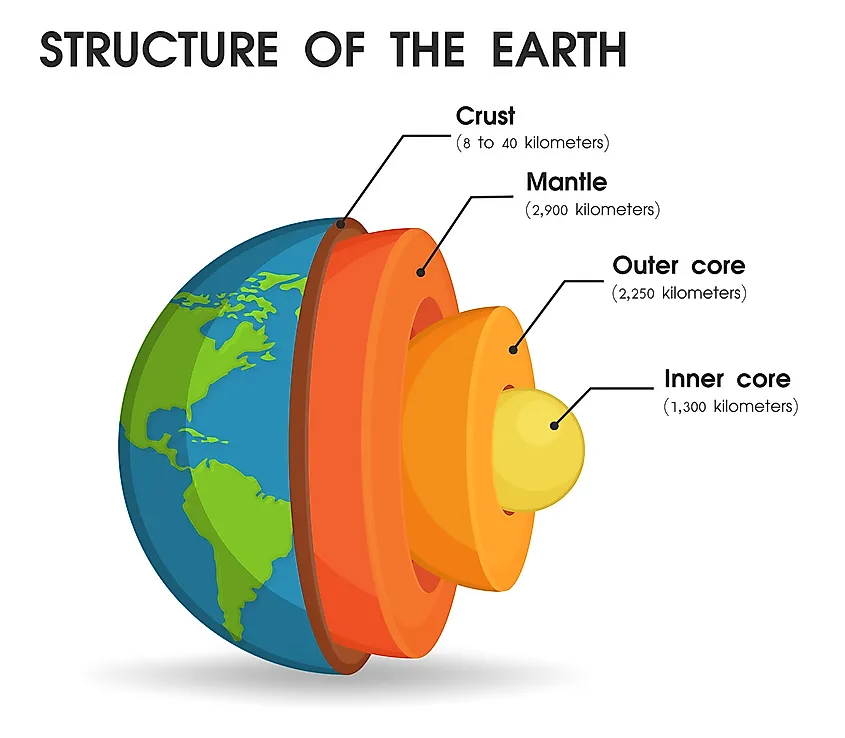
The Earth consists of three distinct layers; crust, mantle, and core. The core is split into an outer and inner core made up of iron and nickel. The inner core is about 1,221 kilometers thick, while the outer core is 2,259 kilometers thick. The mantle lies between crust and core and is about 2,800 kilometers thick. Crust, or the outer shell, is 1-80 km thick and comprises continental and oceanic crust. The crust and top of the upper mantle form the lithosphere, divided into several tectonic plates.
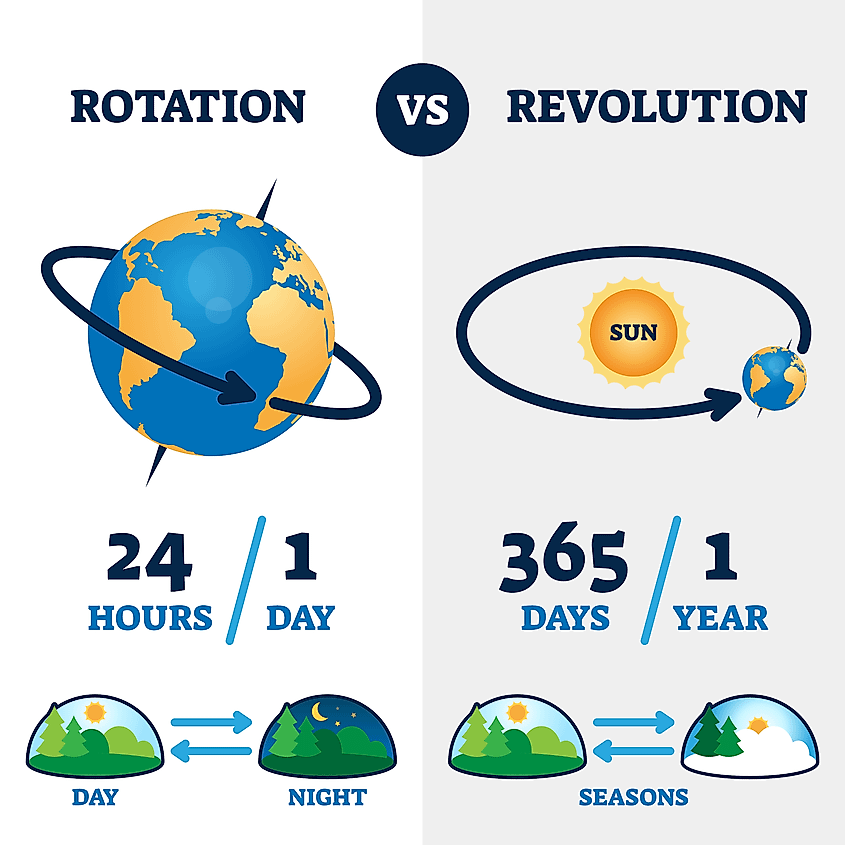
Earth spins or rotates around the axis as it orbits the Sun. It rotates counterclockwise once in about 24 hours. As a result of tidal acceleration, the Earth’s rotation has slowed down slightly, with solar days slightly longer by about two milliseconds. On the other hand, the Earth takes about 365.26 mean solar days to travels about 150 million kilometers around the sun. The Planet’s average orbital speed is 107,200 km/h.


 Users Today : 647
Users Today : 647 Total views : 467698
Total views : 467698